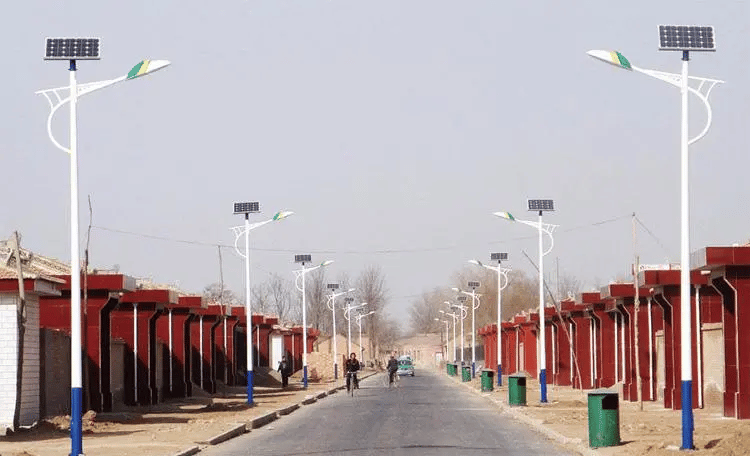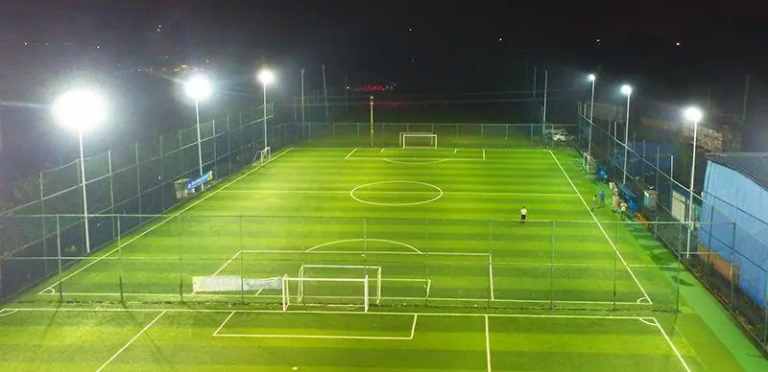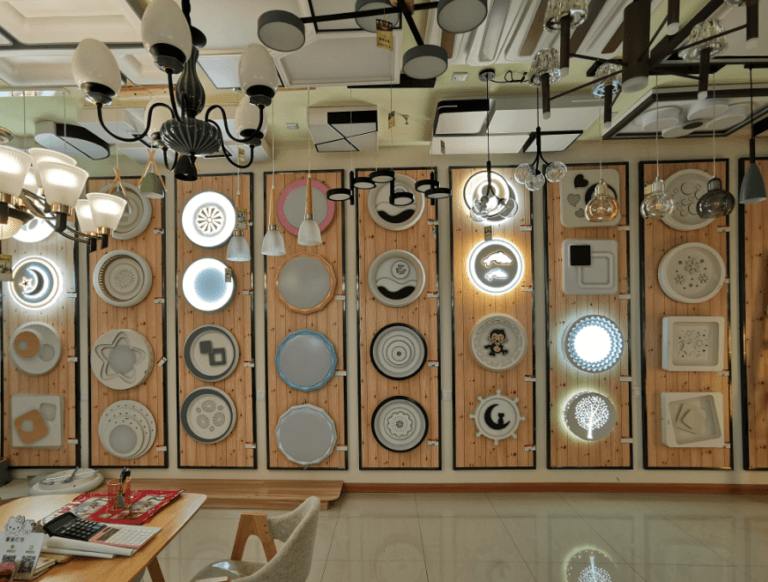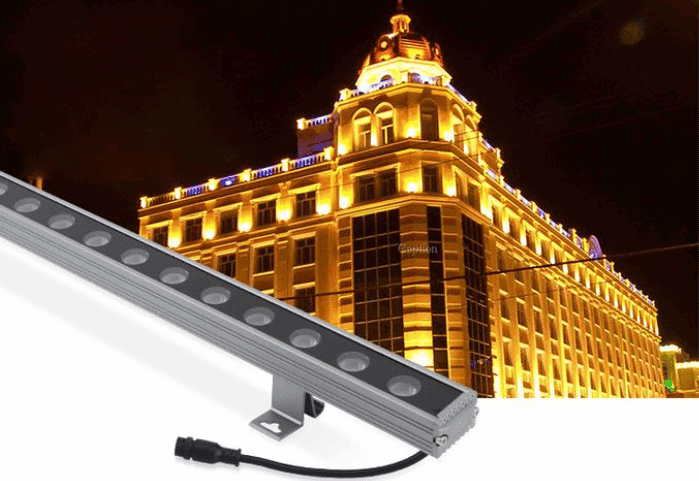With the development of the economy and the progress of society, people have put forward higher and higher requirements for energy, and the search for new energy has become an urgent task facing human beings. Solar power is considered to be the most important energy source in the 21st century due to its advantages of cleanliness, safety, extensiveness, and adequacy of resources that are unmatched by thermal power, hydropower, and nuclear power. As a result, solar LED lamps have gradually become a new trend, and the dazzling array of solar lamps on the market is dazzling. Today we will talk about the relevant knowledge about solar LED lamps.

What are the solar led lights?
Solar lamps use sunlight as energy. During the day, the solar panels charge the batteries, and at night, the batteries supply power to the light source. There is no need to lay complicated and expensive pipelines. The layout of the lamps can be adjusted arbitrarily, which is safe, energy-saving, and pollution-free. Solar lamps are mainly composed of solar cell components (solar panels), battery packs, intelligent controllers, high-efficiency energy-saving light sources, light poles, installation materials, etc. The parameters of common solar LED lamps are as follows:
- Main material: the light pole is an all-steel structure, the whole is hot-dip galvanized/sprayed on the surface;
- Solar cell module: polycrystalline silicon/crystalline silicon solar panel 30-200WP;
- Controller: dedicated controller for solar lamps, light control + time control, intelligent control (lights are turned on when it is dark, and lights are turned off when it is bright);
- Energy storage battery: fully enclosed maintenance-free lead-acid battery 12V50-200Ah, or lithium iron phosphate battery/ternary lithium battery, etc.
- Light source type: energy-saving high-power integrated LED light source
- Light pole height: 5 meters to 12 meters (can be made according to customer requirements);
- Rainy days(Duration): can work continuously for 3~4 rainy days (different regions/seasons)
How does solar lighting work?
Solar LED lamps use solar panels to convert the absorbed light into electrical energy, which is stored in the battery of the control box installed under the light pole.
What are the common types of solar lamps?
- Solar home lighting. Compared with ordinary LED lights, solar lights have built-in lithium batteries or lead-acid batteries, which can be charged by one or more external solar panels. The general charging time is about 8 hours, and the use time is as long as 8-24 hours. – Generally with charging or remote control function, the shape varies according to user needs.
- Solar signal lights (aviation obstruction lights). The role of navigation, aviation, and land traffic lights is very important. In many places, the power grid cannot supply power, and solar signal lights can solve the problem of power supply. The light source is mainly LED with small particles of directional light. Good economic and social benefits have been achieved.
- Solar lawn light. Solar lawn lamps are also called solar bollard lights, the light source power is 0, 1~1W. Generally, a small particle light-emitting diode (LED) is used as the main light source. The solar panel power is 0,5W~3W, can use 1, 2V nickel battery and other 12 batteries.
- Solar Led landscape lights. Landscape lighting solar lights are used in squares, parks, green spaces, and other places, using various shapes of low-power LED point light sources, line light sources, and cold cathode modeling lights to beautify the environment. Solar landscape lights can get better landscape lighting effects without damaging the green space.
- Solar sign light. Lighting for night guidance, house numbers, and intersection signs. The requirements for the luminous flux of the light source are not high, the configuration requirements of the system are low, and the usage is large. The light source of the marking lamp can generally be a low-power LED light source or a cold cathode lamp.
- Solar street light. Solar street lights, applied to village roads and rural roads, are one of the main applications of solar photovoltaic lighting devices. The light sources used are low-power high-pressure gas discharge (HID) lamps, fluorescent lamps, low-pressure sodium lamps, and high-power LEDs. Due to the limitation of its overall power, there are not many cases applied to the main roads of the city. With the complementation of municipal lines, the application of solar photovoltaic lighting street lamps on main roads will be more and more.
- Solar insecticidal lamp. Used in orchards, plantations, parks, lawns, and other places. – Generally, fluorescent lamps with a specific spectrum are used, and more advanced ones use LED violet lamps, which are radiated by their specific spectral lines to trap and kill insects.
- Solar Garden Lights. Solar garden lights are used in the lighting and decoration of urban roads, commercial and residential quarters, parks, tourist attractions, squares, etc. The above-mentioned commercial lighting system can also be transformed into a solar lighting system according to user needs.
The key points to know when you plan to buy Led solar lights
1. False solar lamp power (wattage)
Most sellers of solar lamps will use false power (wattage), especially solar street lamps and solar projectors. The power marked by the lamps is often 100 watts, 200 watts, or even 500 watts, while the actual power and brightness are even one-tenth of that. can’t be reached. The fundamental reasons for this phenomenon: First, there is no unified industry standard for solar lamps; second, there is no simple and direct power measurement tool, and even manufacturers calculate the power of solar lamps according to the parameters of the power controller; third, consumption Consumers generally do not understand solar lamps, and most of them have the mentality that it will be better to spend the same money to buy lamps with a higher power. On this basis, some suppliers will not sell their products if the power is not false.
The power(wattages)of the solar lamp is limited by the capacity of the battery, and the capacity of the battery is limited by the photovoltaic panel. To make a solar lamp with an actual brightness of 100 watts, if it is only on for 8 hours, at least 3.7V ternary lithium batteries 220AH and 6V are required. The photovoltaic panel of 260 watts, will require a high price and is technically difficult to achieve.
2. The power of the solar-powered panel must match the power of the battery
Some manufacturers’ solar lights are marked with a 15A battery, but they are equipped with a 6V15W photovoltaic panel. I feel very speechless about this. The peak value of 6V15W photovoltaic panels can generate 2.5AH of electricity per hour. If the average sunshine duration is 4.5H, it is impossible for 15W solar panels to fully charge 15A batteries in 4.5 hours.
Some might say, don’t consider any other time except 4.5 hours? After all, in addition to the peak value of 4.5 hours, electricity can also be generated at other times! Yes, this statement is correct. First of all, the efficiency of power generation at other times except the peak time is very low; secondly, the conversion of peak production capacity here is calculated according to 100% conversion, and it is not bad that the photovoltaic power generation can reach 80% conversion in the process of charging the battery, which is also The reason why your 10000mA power bank can’t charge 2000mA iPhone 5 times. As for the details that are not calculated here, it is because we are not engineers in this area and do not need to be very precise.
3. Monocrystalline silicon solar panels are better than polycrystalline silicon ones
It is not exactly right.
Many businesses advertise that their solar lamps and solar panels are monocrystalline silicon, with high conversion efficiency, which is better than polycrystalline silicon. I am speechless about this. To measure the quality of a solar panel from the perspective of solar lamps, it should be whether it can fully charge the battery of the lamp. for example, solar led floodlight, if its solar panels are all 6V15W and the electricity produced per hour is 2.5A, how do you determine that monocrystalline silicon is better than polycrystalline silicon? The debate between monocrystalline silicon and polycrystalline silicon has always existed. In laboratory tests, the efficiency of monocrystalline silicon is indeed a little higher than that of polycrystalline silicon, but in installed applications, the gap between them is not large. Applied to solar lamps, whether it is monocrystalline or polycrystalline, it will be enough as long as high-quality solar panels can be used.
4. Solar panels must be installed where they can receive the maximum amount of sunlight
The reason why many customers buy solar lamps is that it is easy to install and does not require cables, but in practical applications, they do not consider whether their environment is suitable for installing solar lamps. If the solar lamps are installed in places with less than 3 hours of sunshine, do you ensure that the solar lamps are easy to use? The optimal wiring distance between the lamp and the solar panel is 5 meters, the longer the conversion efficiency is, the lower the conversion efficiency.
5. Do solar lamps use new batteries?
At present, the batteries sold by solar lamp battery suppliers on the market are all disassembled batteries for new energy vehicles, whether ternary lithium or lithium iron phosphate batteries are disassembled batteries. The reasons are as follows: First, brand-new batteries are expensive, and few manufacturers can use them; second, brand-new batteries are supplied to major customers such as new energy vehicles, and even if they have money, they cannot buy them.
So is the disassembled battery durable? The answer is that the disassembled battery is also very durable. Customers of our own lamps that we sold 3 years ago are still using them. There is a complete set of detection methods for disassembling the battery, and high-quality batteries can be obtained as long as they are strictly screened. The test here is not the quality of the battery itself, but human nature.
6. The difference between ternary lithium battery and lithium iron phosphate battery
These two kinds of lithium batteries are mainly used in integrated solar street lights and flood lights. The price of these two kinds of lithium batteries will be different. Their high-temperature resistance and low-temperature resistance performance are different. Ternary lithium batteries have strong low-temperature resistance and are mostly used in low-temperature areas; while lithium iron phosphate batteries have better high-temperature resistance and are suitable for countries with high temperatures all year round. To learn more about the battery differences, click here.
7. The more Led chips of solar lamps, the higher the brightness?
More and more manufacturers are keen to make as many led chips as possible because when customers see so many led chips in lamps, they will think that the materials of lamps and lanterns are sufficient and the quality is good.
However, it is not the led chip but the battery that maintains the brightness of the solar lamp. How many watts of power the battery can provide to the lamp, the lamp can work at how much brightness. Simply adding led chips’ quantities will not increase the brightness, but will increase the resistance and increase the energy consumption.

Hello, customers
My name is Ricky Wang, I’m the business manager of GRNLED. I have been in LED lights industry for more than 10 year. Feel free to contact us. I’m happy to provide you the best service and products.
Email: info@grnled.com | WeChat: ledfixture






